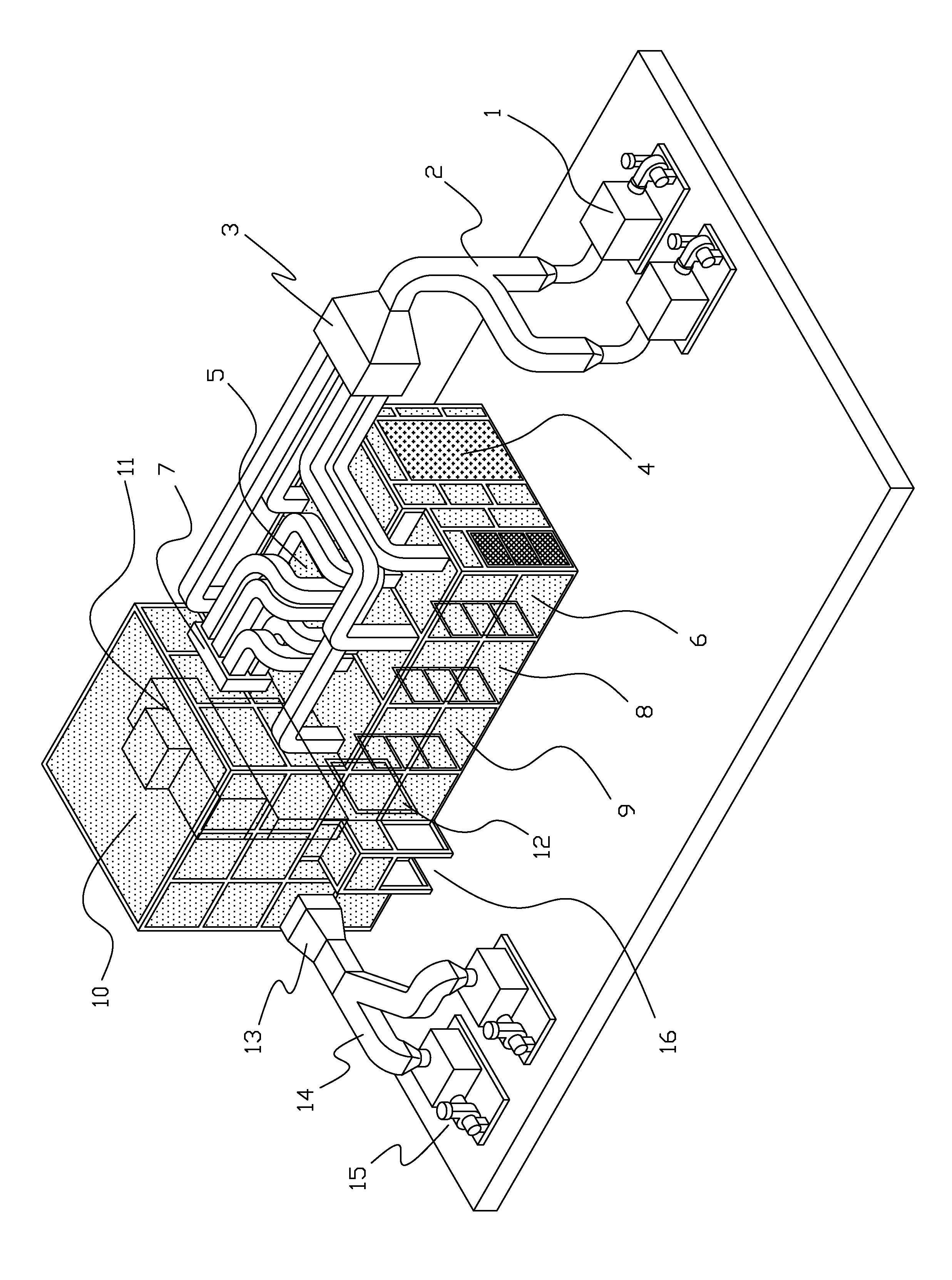Removal equipment and method for the storage facility for transuranium compounds
a technology of transuranium compounds and equipment, which is applied in the field of large-scale removal of transuranium compound storage facilities, can solve the problems of contaminated equipment and piping in the two glove boxes, the inability to move the glove box out, and the contamination of the interior surface of the glove box, so as to achieve effective prevention of leakage of contamination, stable airflow, and low airborne concentration
- Summary
- Abstract
- Description
- Claims
- Application Information
AI Technical Summary
Benefits of technology
Problems solved by technology
Method used
Image
Examples
Embodiment Construction
[0030]FIGURE is the diagram for the quarantine tent and the negative pressure ventilation system removed from the transuranium glove box of Unit 21. As shown in the FIGURE, the operation range for the quarantine tent includes: removal operation section 10 (C1), personnel entry / exit room 19 (A1), personnel entry / exit room 28 (A2), personnel entry / exit room 36 (A3), large object transfer room 15 (B1), large object transfer room 24 (B2). There are six sections in total, which are one removal operation section 10 and five air-lock rooms.
[0031]The quarantine tent includes a removal operation section 10 (C1) and five airlock rooms (A1, A2, A3, B1 and B2). To maintain a gradient for the air flow in the quarantine tent from low negative pressure to high negative pressure and effectively control a particle direction in airflow, it is necessary to build a negative pressure ventilation system to work with the quarantine tent. The work scope for the negative pressure ventilation system includes...
PUM
 Login to View More
Login to View More Abstract
Description
Claims
Application Information
 Login to View More
Login to View More - R&D
- Intellectual Property
- Life Sciences
- Materials
- Tech Scout
- Unparalleled Data Quality
- Higher Quality Content
- 60% Fewer Hallucinations
Browse by: Latest US Patents, China's latest patents, Technical Efficacy Thesaurus, Application Domain, Technology Topic, Popular Technical Reports.
© 2025 PatSnap. All rights reserved.Legal|Privacy policy|Modern Slavery Act Transparency Statement|Sitemap|About US| Contact US: help@patsnap.com

